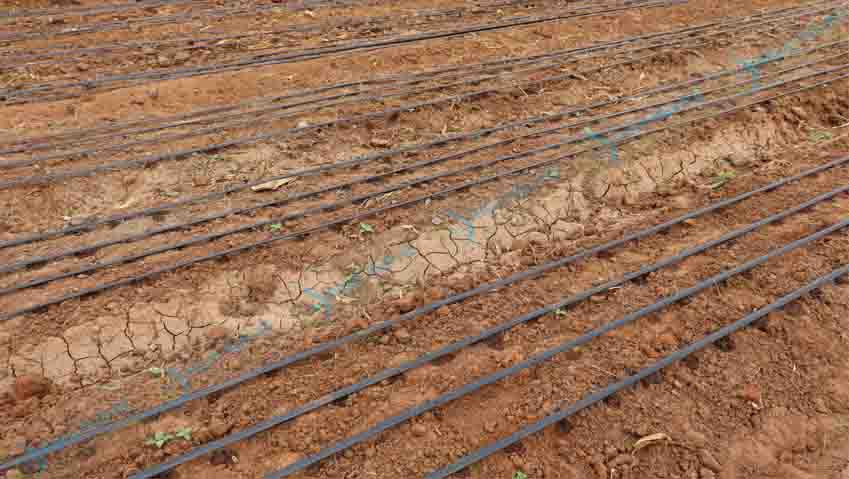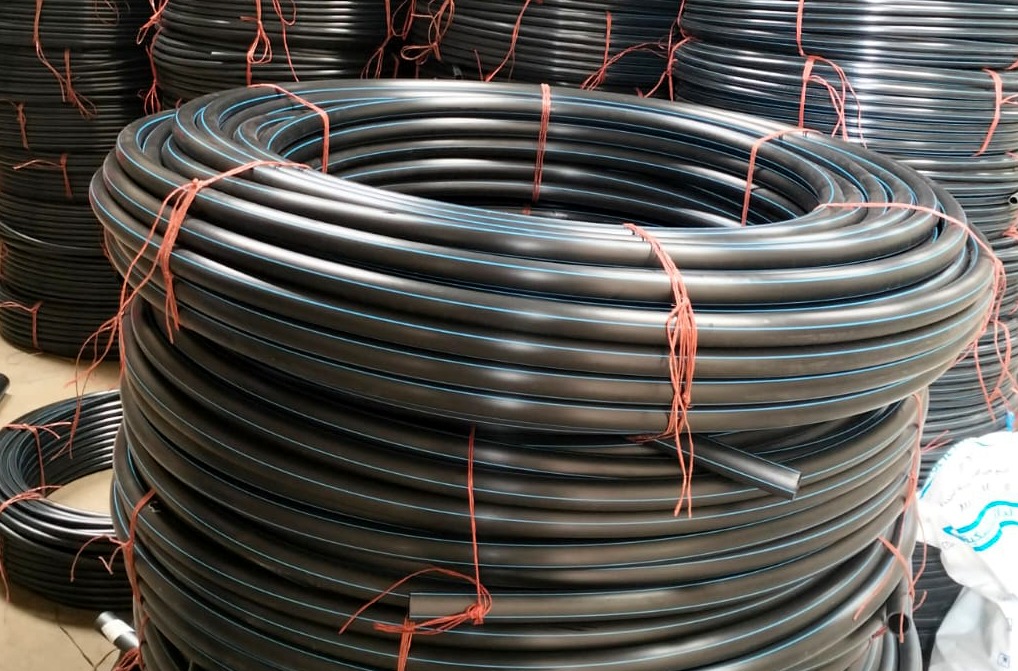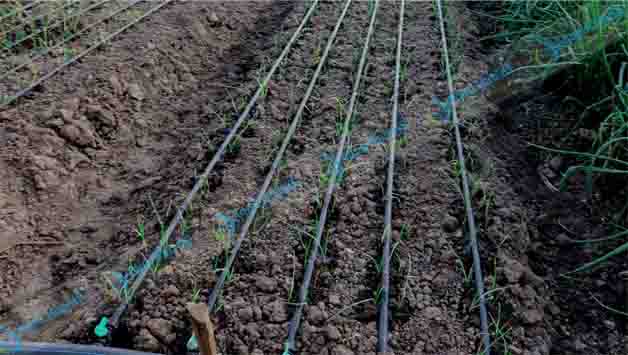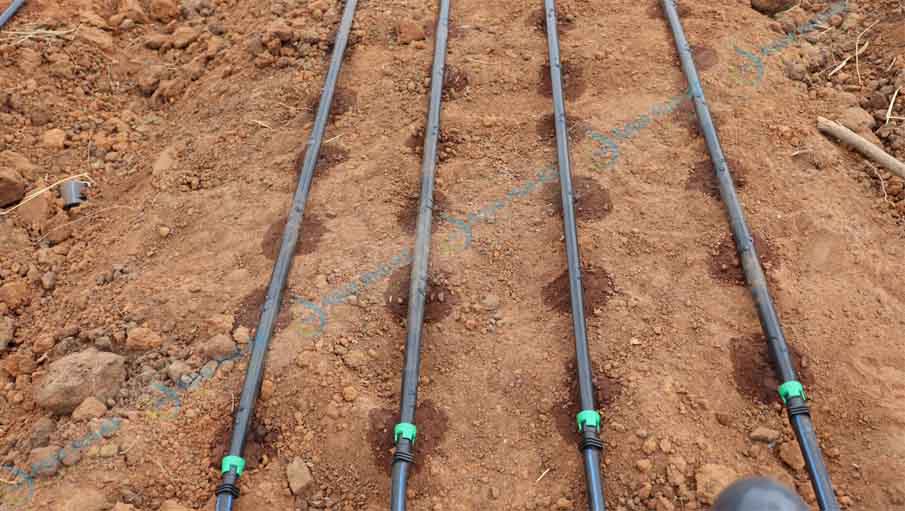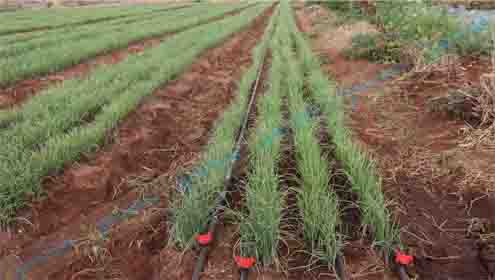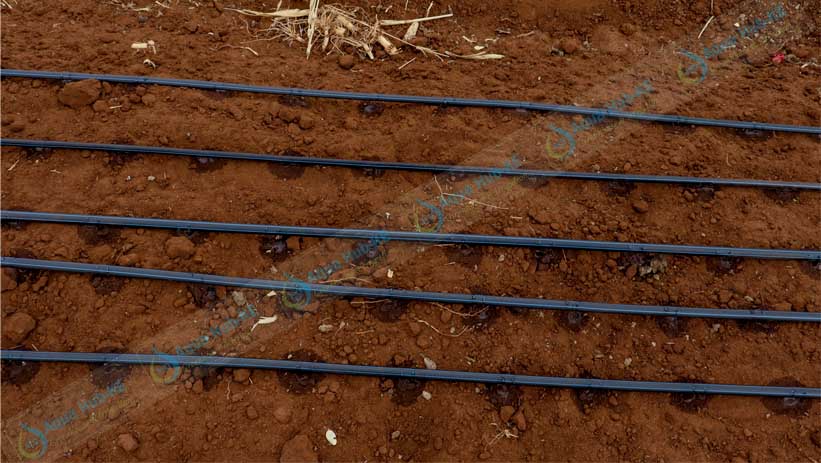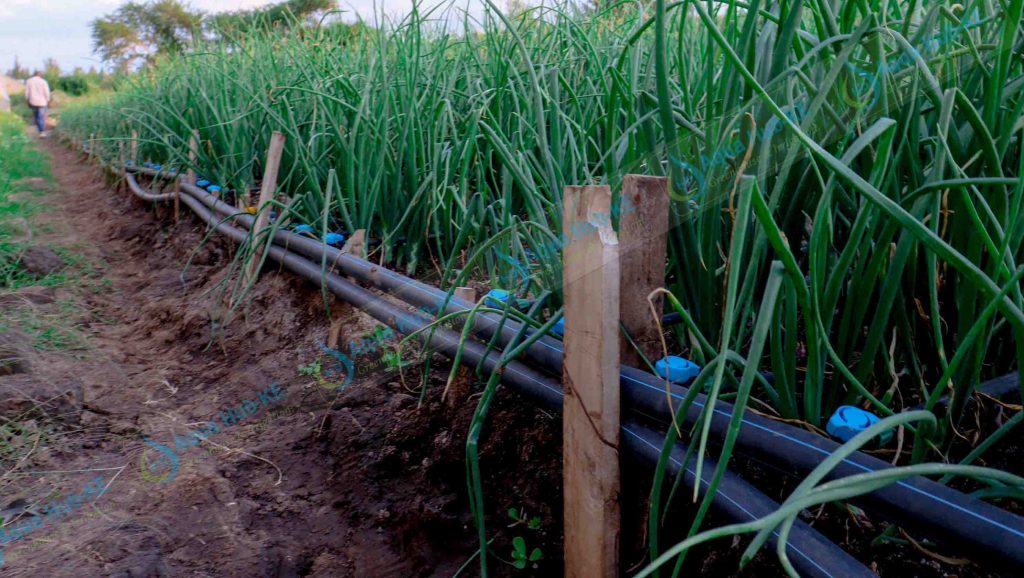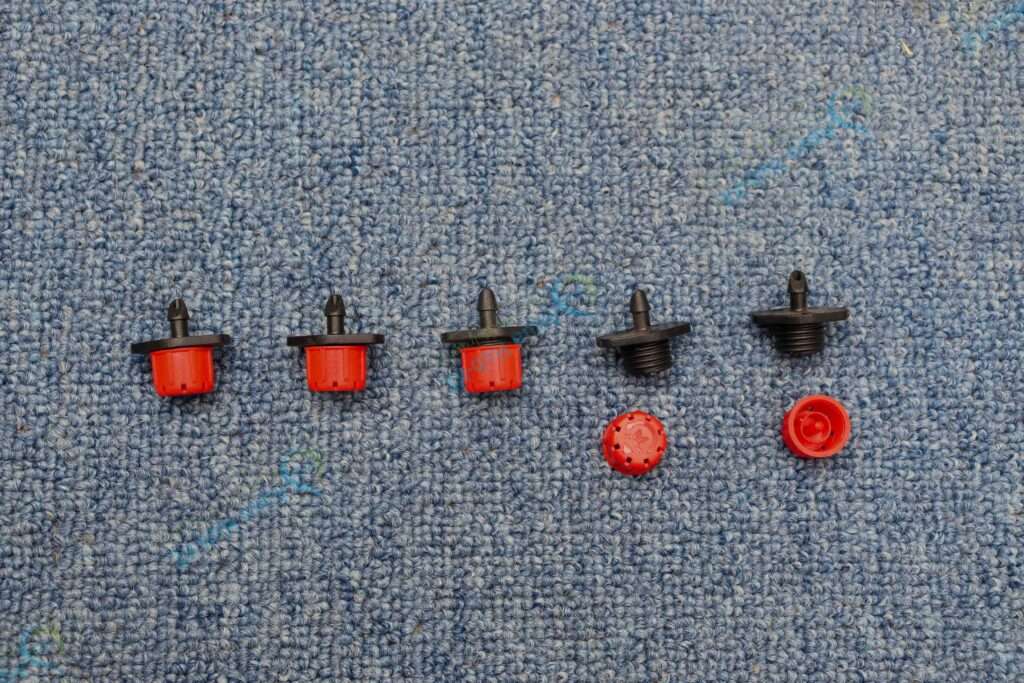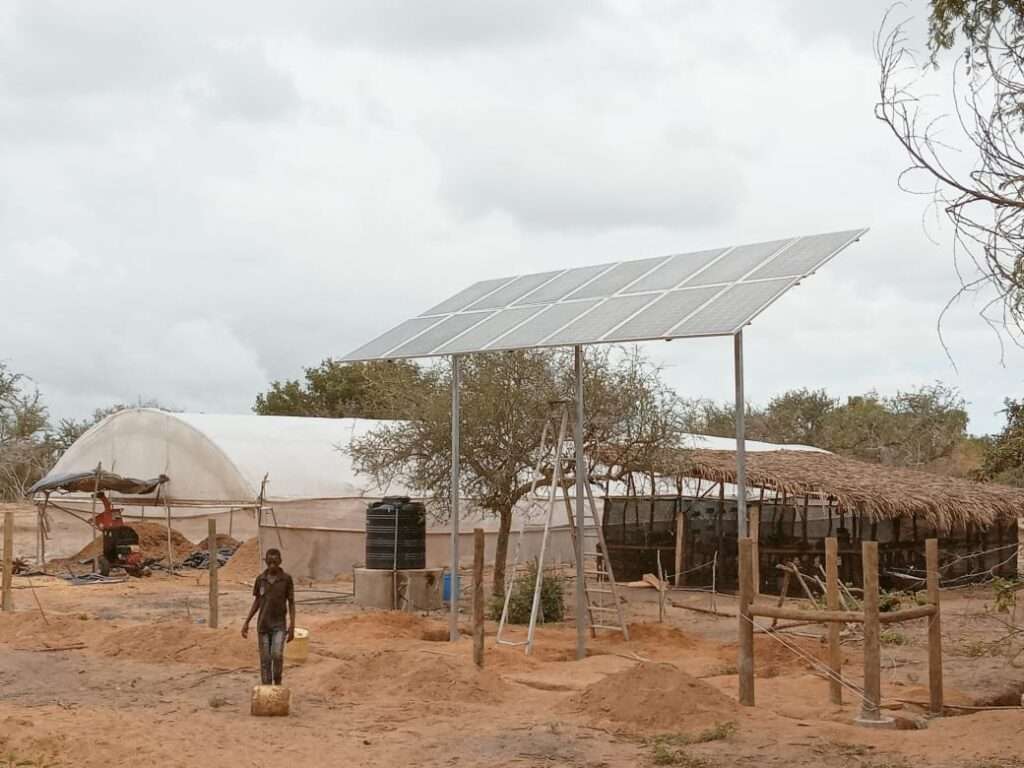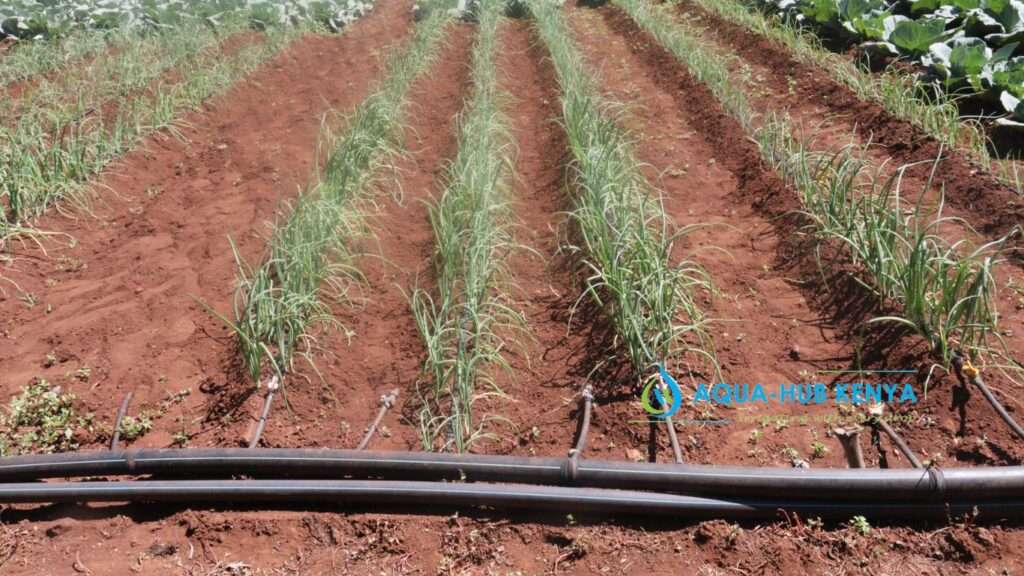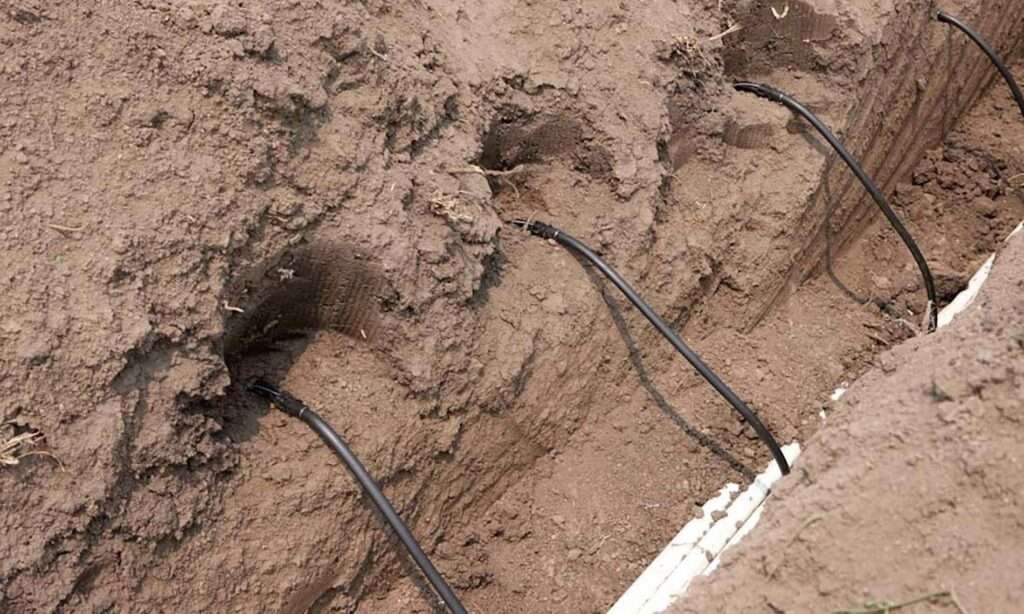What you need for Drip Irrigation in Kenya
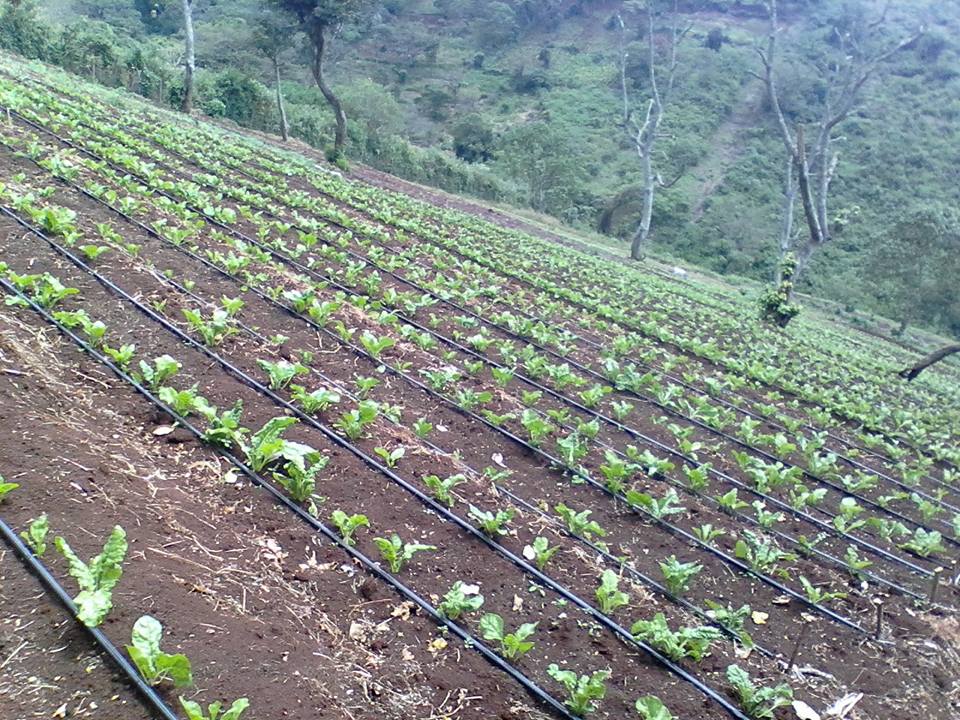
What you need for Drip Irrigation in Kenya. Aqua Hub Kenya has all quality drip irrigation systems in Kenya. Benefit from our lower drip irrigation systems prices in Kenya.
What is Drip Irrigation?
Drip irrigation is an efficient way of irrigating plants using a system of pipes and emitters that allow droplets of water to the root zones.
Drip method, also known as micro-irrigation, delivers water slowly and directly to
the plant roots leaving a small wetting pattern.
Drip Irrigation System Components
What do you need for drip irrigation in Kenya? Here are the required components.
- Pump unit – Pumps water from the source at the pressure required for distribution. The pressure depends on the sizes of pipes and the pressure head desired.
- Control Valves – For controlling the discharge to or stopping water from entering certain farm sections.
- Main Pipes – Large supply pipes for mainline connection. Usually, HDPE or PVC.
- Sub Mainlines – Smaller diameter branching pipes. Distributes water from the mainline.
- Laterals – Drip emitters or drip lines. Have emitter holes at equal intervals with same diameter size. Allows plant lines to receive water.
- Filtration Unit – Screen filter systems or Disc filters to trap suspended dirt, sand, and soil particles.
- Fertigation Kit – For applying fertilizers to plants.
Drip Irrigation Model & Layout
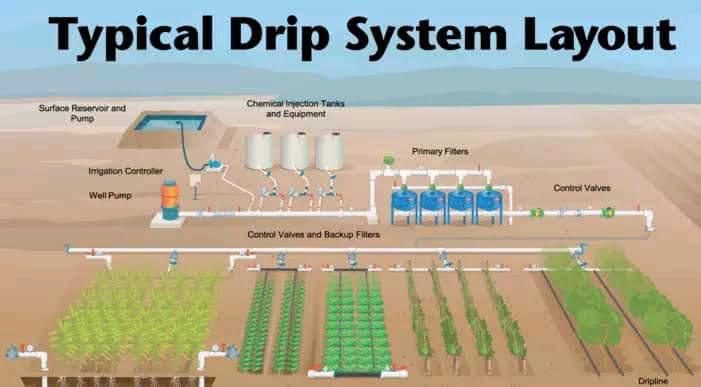
Drip Irrigation in Kenya
The Kenyan Climate does not meet the required amount of rainfall for maximum yield in crop production. Therefore, efficient methods of irrigations must be employed in agriculture and production of tomato, onions, capsicum, vegetable, and other crops.
Drip Irrigation Kits for Onions
Onions grow best under drip irrigation. Onion drip emitters of 15 cm or 20 cm are good for convenient spacing and growth.
Tomato Drip Kit
A tomato drip system takes a drip emitter pipe of 20 cm spacing.
Capsicum Drip Kit
Drip emitters of 20 cm spacing or 30 cm are good for capsicum.
Vegetable Drip Kit
Vegetable drip lines take 20 cm spacing for kales and 30 cm for cabbage, and pumpkins.
Kitchen Garden Drip Kit
Garden drip kits are simple drip emitter and pipe connections. A tank connection and a drip tape of 20 cm is common.
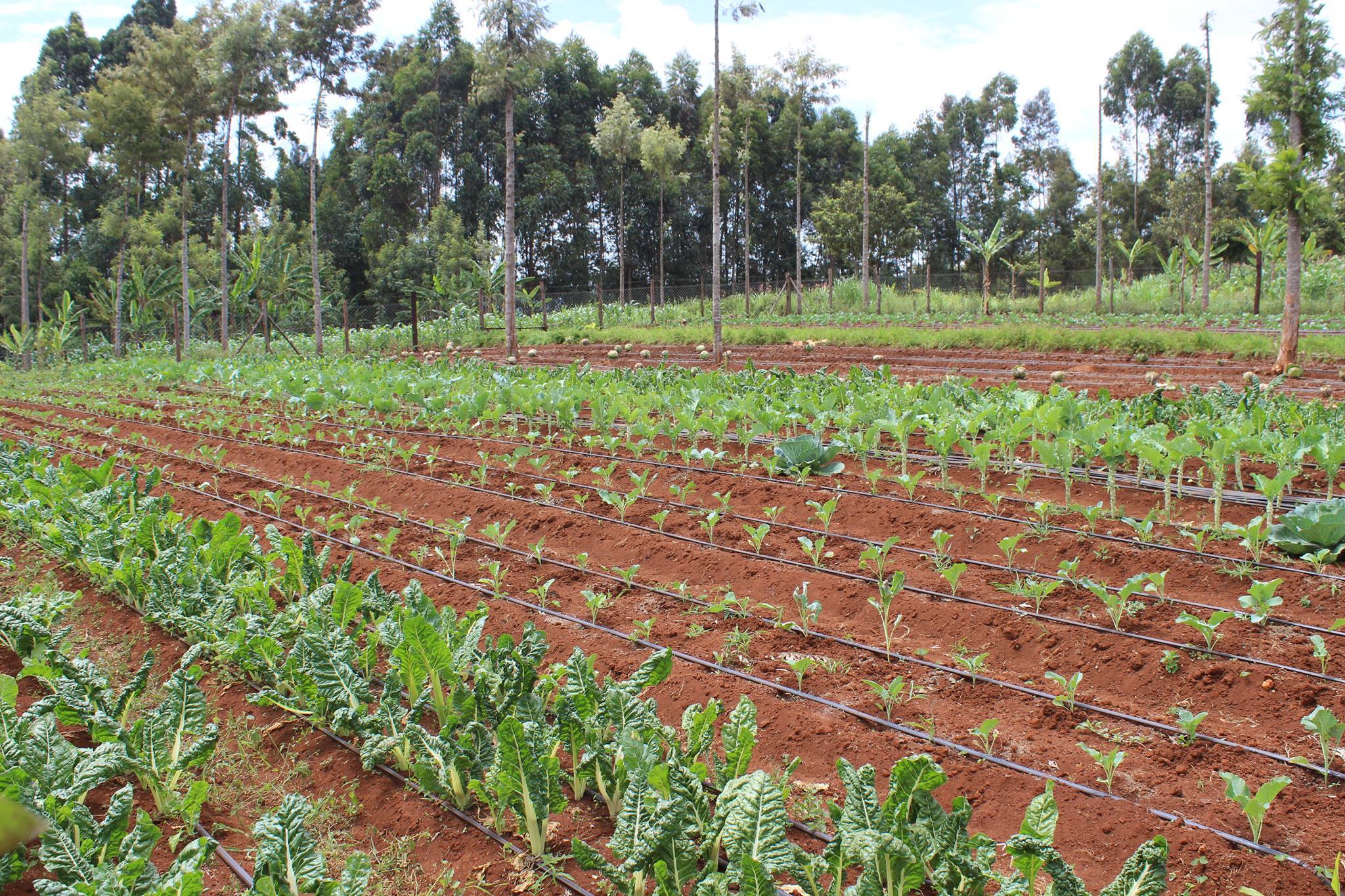
Advantages of Drip irrigation
- Drip irrigation is water-saving. The method saves about 60 % of water as compared to overhead and furrow methods.
- It uses minimum labour and fertilizers as well. Fertilizer can be applied to crops through drip irrigation system. The method involves connecting a fertilizer tank or fertigation kit to the drip irrigation system to save labour as well as fertilizer.
- Drip irrigation is a soil erosion control measure. The lower impact of water falling on soil does not lead to soil erosion.
- With drip irrigation, efficiency is high due to lower cost of running and maintenance.
- You can turn a small piece of land into a highly productive field.
How to Install Drip Lines in Kenya
Drip irrigation system requires proper installation and expertise to enhance efficiency and long time operation. The installation is done in procedures and steps that include;
- Preparing the land. The land needs preparation, at times of dry weather. It involves clearing vegetation, digging, and tilling of land.
- Smoothening or breaking the soil. To get rid of large soil particles that can affect layout of pipes during installation.
- Dividing the farm into sections and make planting beds. The farm sections should be spaced 1 M apart.
- Preparing planting holes – making planting holes before installing pipes is good to prevent pipe damages.
- Digging trenches around the edges of farm sections. The trenches for burying mainline and branching pipes. They should be 1 ft deep and about 15 cm wide.
- Lay mainline and sub mainline pipes on the trenches.
- Connect mainline to sub mainline pipes.
- Lay the drip emitters on the beds 1 M apart.
- Connect the sub mainline pipes to the drip emitters.
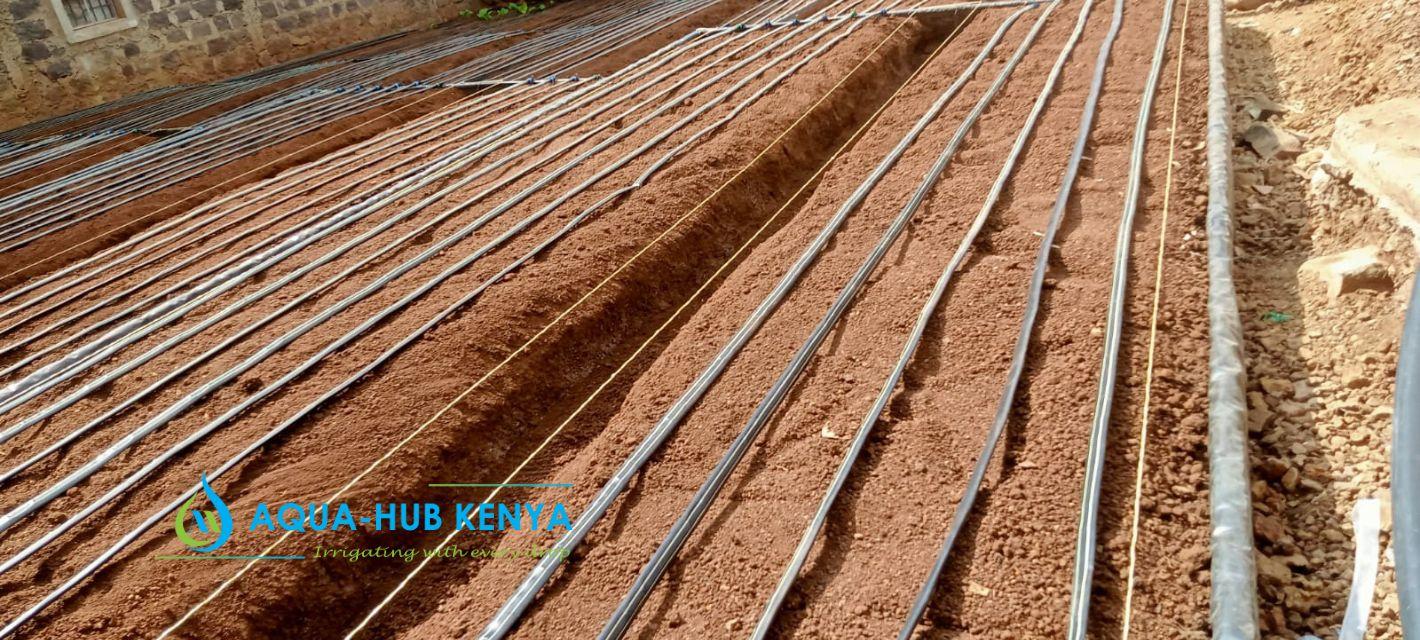
Driplines Prices in Kenya
The cost to incur in setting up and running drip irrigation system in Kenya can be met by most farmers. Drip Irrigation Prices in Kenya depends on various factors such as farm size, market prices, crop types and pipe sizes.
Aqua Hub Kenya has lower rates for drip systems and kits in Kenya. We are the most ideal company with the following prices.
| Size/ Line per bed | 1 Line | 2 lines | 3 Lines |
| 1 acre | 75,000 | 130,000 | 160,000 |
| 1/2 acre | 40,000 | 61,000 | 71,000 |
| 1/4 acre | 28,000 | 40,000 | 50,000 |
| 1/8 acre | 13,000 | 23,000 | 26,000 |
Drip Installation by Aqua Hub
We handle projects to install drip and other systems to clients in Kenya and East Africa at large. Once we decide to handle a project, we normally have several steps to take. The steps are:
- Site Visit – We always request for a visit to the site prior to the installation day to ensure that the site meets the conditions. Conditions are soil water retention, PH, flat or good land, and water source availability.
- Quotation – The farmer requests and gets a quotation for the drip irrigation kits and costs as per farm size.
- Payment – Client makes payment for the drip kits as per our terms.
- Supply and delivery – The delivery of the drip kits to the site.
- Actual installation – The actual process of setting up and connecting pipes. The process takes 2-3 working days depending on the project size.
Conveniently reach us through +254790719020 or email: info@aquahubkenya.co.ke.

